A ferry ride from Lisbon to Barreiro and back
While we had had a rainy start to our day, by the time we walked to the Terreiro do Paço ferry terminal the sun was looking to come out.
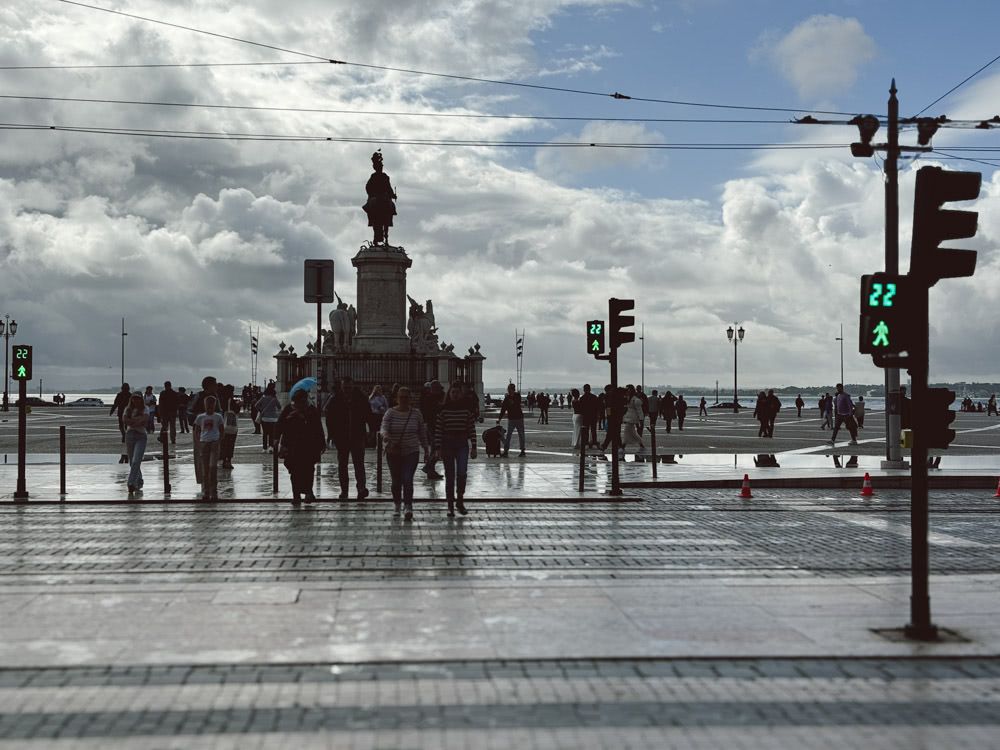
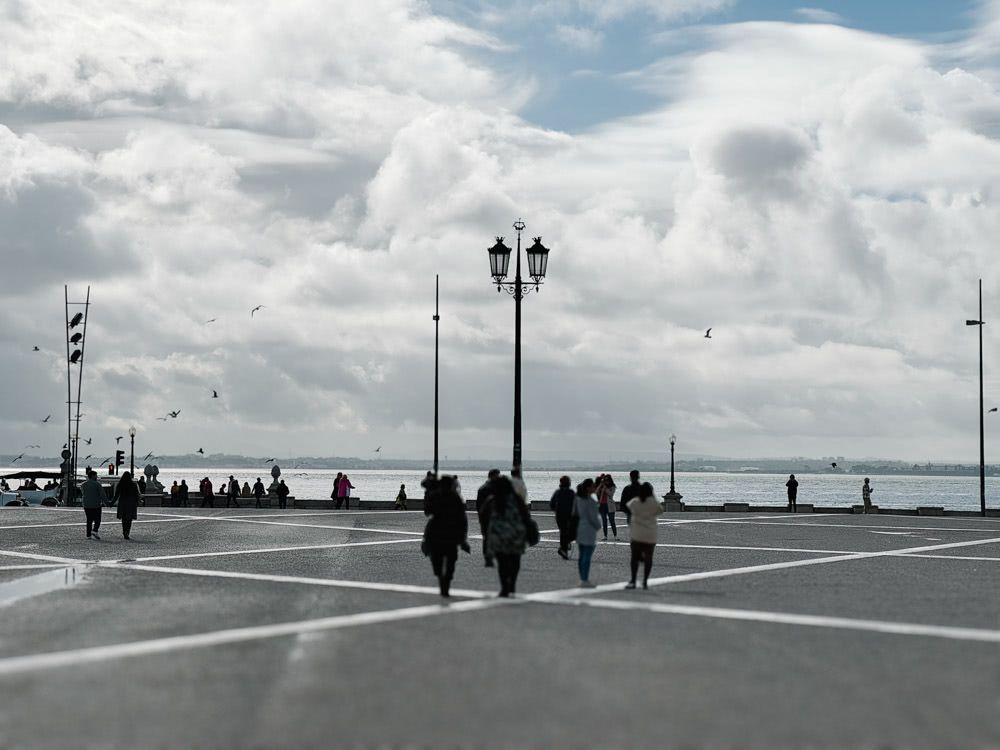

The ferry terminal building looked quite new and a bit bland on the outside - though the facade did seem to have taken some stylistic cues from the Art Deco era. However, it was absolutely regal inside - all columns, marble and granite. The ceiling somehow felt much higher than the exterior had let on. Mosaics of painted tiles depicting coats of arms of various municipalities of Portugal added a splash of colour to the otherwise bare walls.

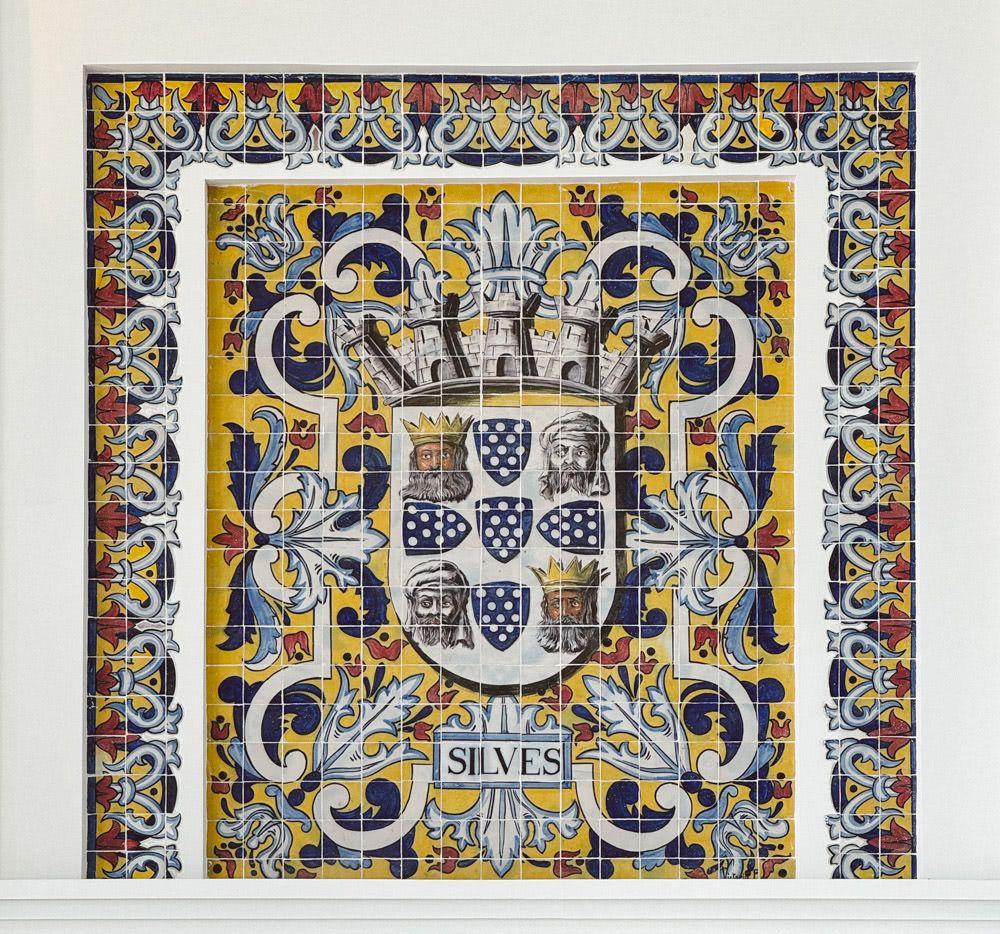
While looking for a place to buy the tickets we found a room in the terminal building with an interactive diorama of Lisbon encased in glass on a large table. There were buttons you could press to illuminate the various bridges and landmarks of Lisbon and even a tide simulator that’d slowly pump water to show you how far the water reaches during the high tide. All very science fair-y and still amusing to us two forty somethings.
We weren’t looking to go anywhere particular in the ferry and settled for the very next one available - a 20-25 minute ride to Barreiro, a small municipality south of Lisbon. The tickets cost a very reasonable € 6.10 per person for a round trip. It wasn’t exactly rush hour so it was easy to score a window seat in the lower deck of the ferry. Just as we were settling in, two guys reeking of sweat and stale beer and arguing loudly in Portuguese sat in the seats behind us. We tolerated them for a couple of minutes but then found different seats - partly because the argument kept becoming more and more raucous but mostly to get away from their collective stench.
Soon our ferry began to move. The ride was fast and smooth1. The windows were tinted and grimy but with enough sun outside I managed to get a photo or two.

The three distinctive, conical buildings at the shore are old windmills that have been long decommissioned and are now a municipal heritage site2.
The Barreiro ferry terminal led us into a large plot of land which was part bus terminal, part parking lot. The clouds had begun to dissipate, the air was clear like it sometime is just after a rainy spell. The sun shone brightly and everything it touched gleamed. It all somehow felt magical.

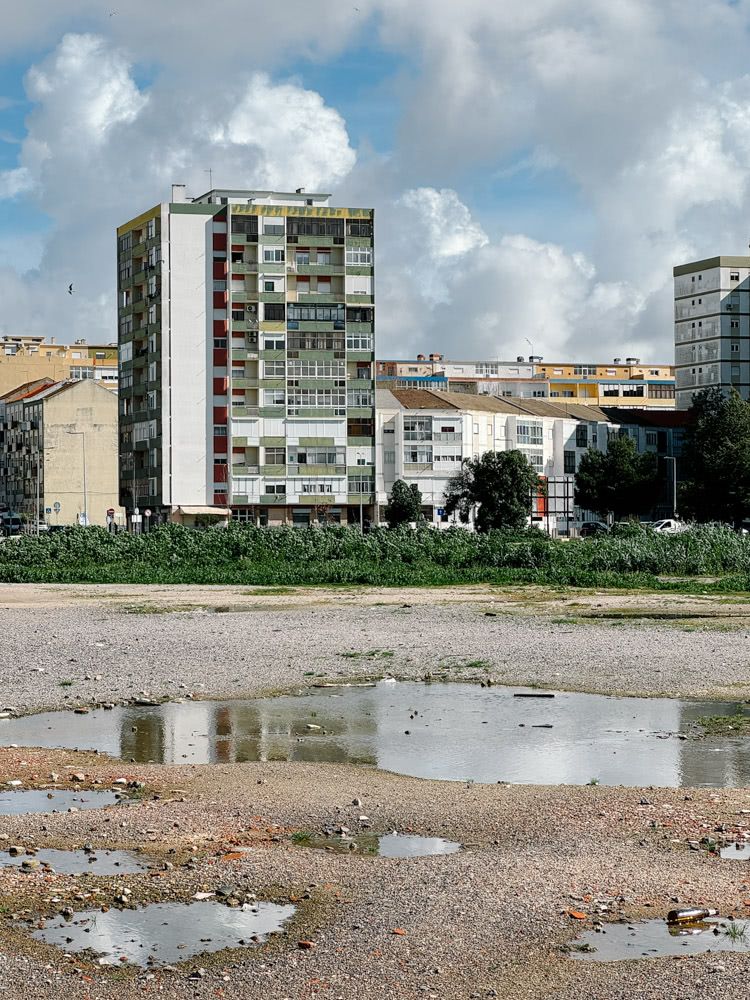

While I was wool-gathering, the wife had spotted a paved footpath alongside the river and decided to see where it would take us3.
At the start of our walk was a small beach littered with several small boats. It looked like they had been deposited by the tide as it went out.
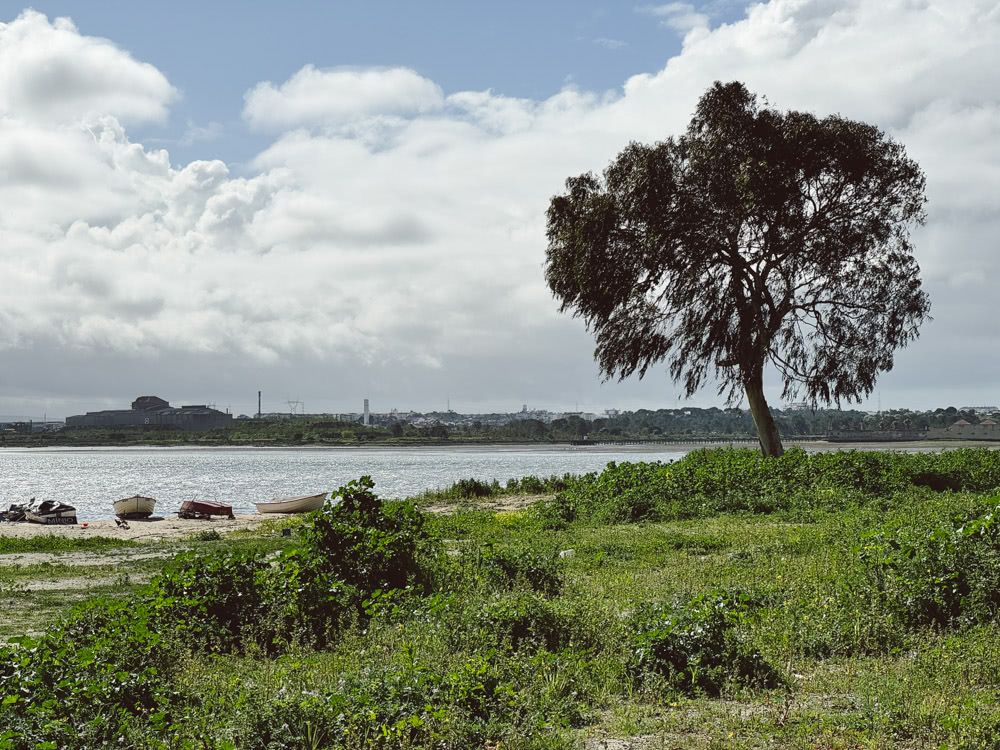
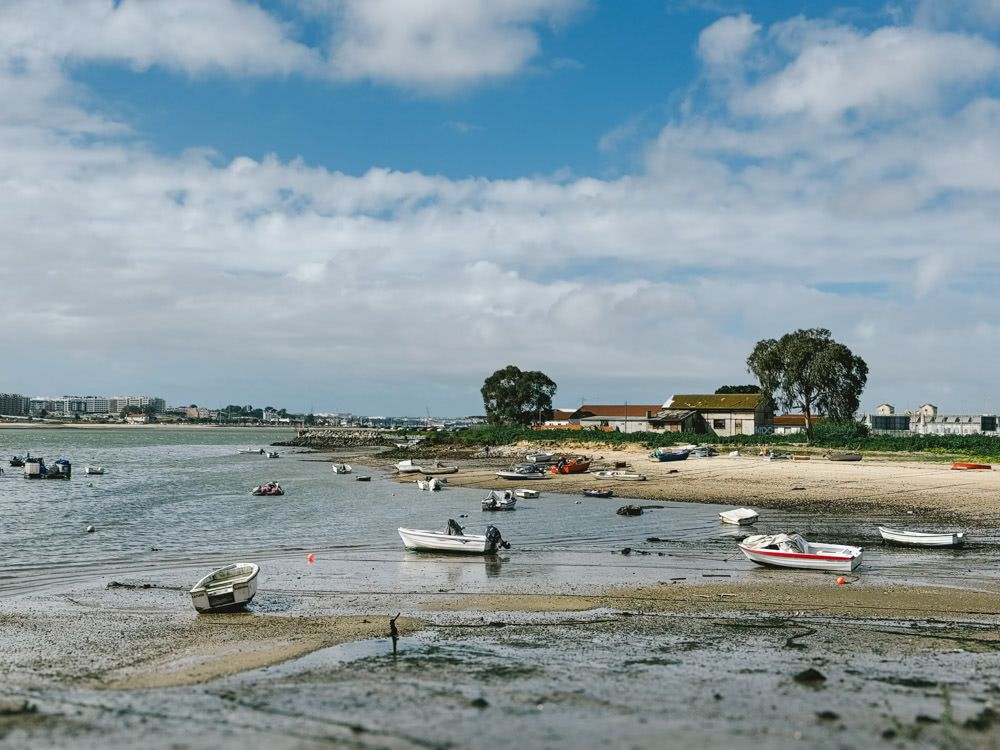
There were apartment buildings across from our walking path. They were all painted in different colours - some ochre, other peach, some grey (with a large colourful mural on one side) and some white. Collectively, under that azure sky and the cumulonimbus clouds, illuminated by the bright light of the mid-day sun, they seemed other-worldly.
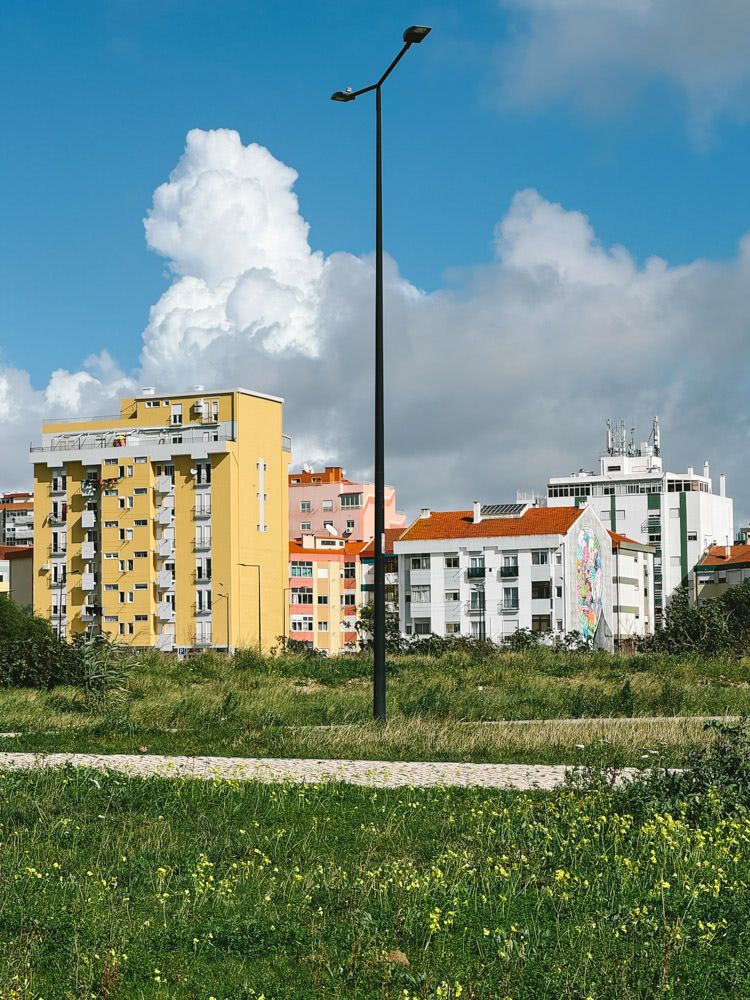
The tide was really low and there were small puddles and rivulets in which seagulls were foraging for food. We also saw many people in rubber boots, bent over and looking for something in the mudflats - clams? Or was there a gold rush on in these parts of the world that we didn’t know of?
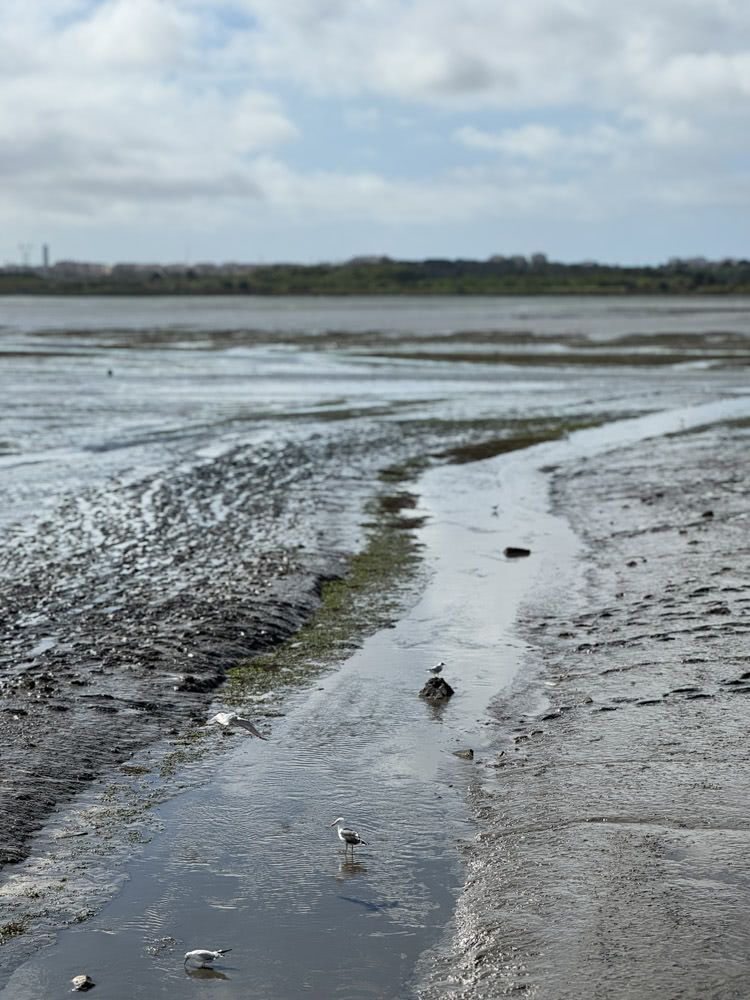

There were also many small cafes along our walk. Usually with facades decorated with colourful murals.
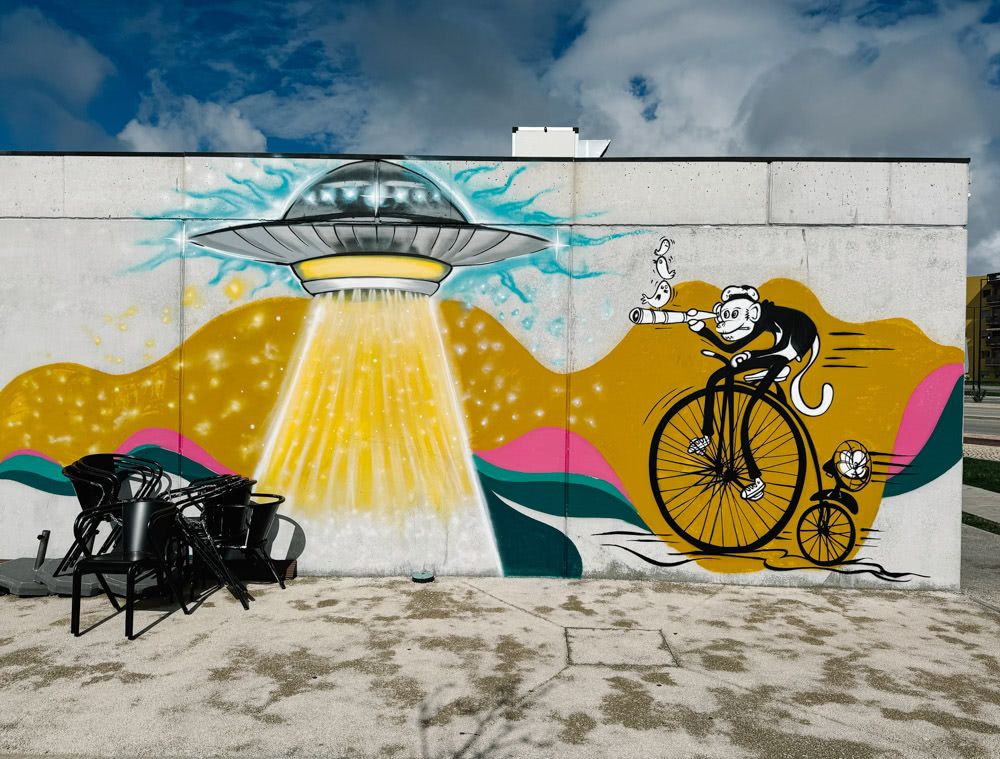
We settled in one of them for lunch. We had a view of a small park from one side of the cafe. There were retiree grandparents playing with their grandchildren while a couple of guys in their local football clubs’ t-shirts were doing their exercise routine. Hard not feel a little guilty when you are gulping your beer and gobbling your food. In our defence, there wasn’t much public transport in sight so we’d be walking all the way back to the ferry station.
There were pine trees planted all along the footpath. They all bore hundreds of soft, pale buds.
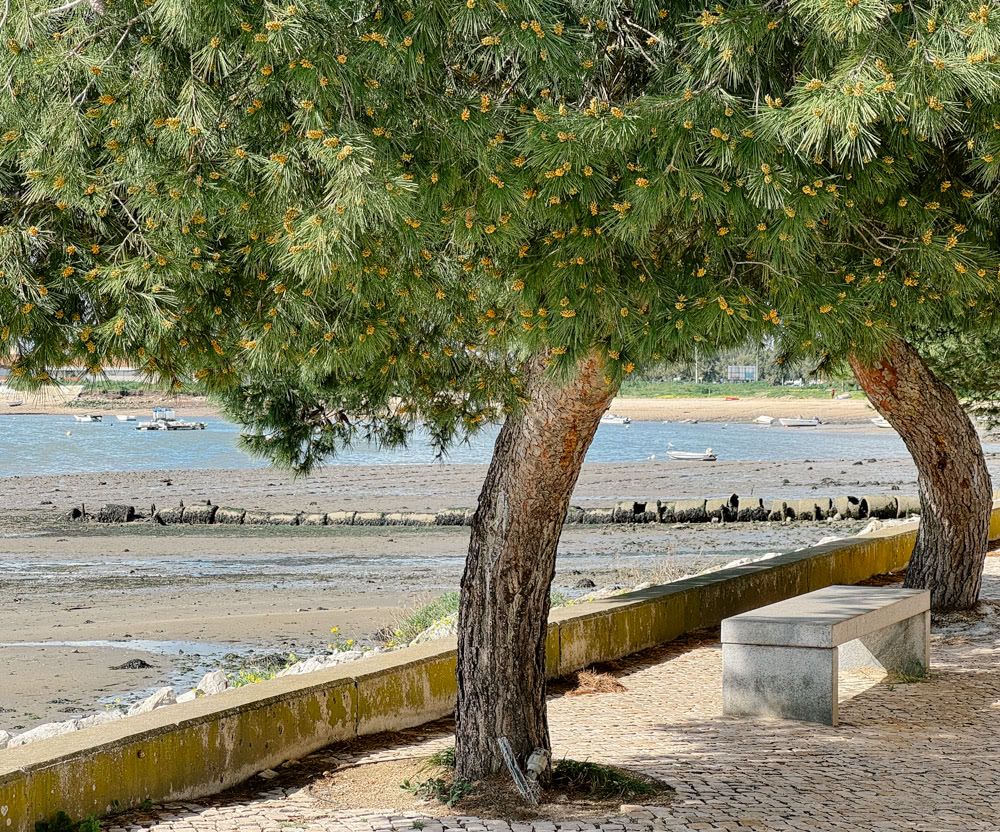
We were back at the Barreiro ferry terminal with a few minutes to spare for the next ferry to Lisbon. A couple of stalls inside the terminal that sold coffee and snacks were arranging cups and saucers on the counter for the influx of people that’d arrive on the ferry. I now found myself fascinated by the wave pattern on the terminal’s floor made with thousands of tiny tiles of black and white stones.

The turnstiles that gated the entry to the ferries’ boarding point had screens above them that along with the usual departure information, also showed ferry’s occupancy percentage. It would update as people would swipe their tickets to enter. The wife suggested we try to work out the ferry’s capacity based on how many people it’d take to bump the percentage up by one. Because when we are not trying to go past Genius on Spelling Bee, this is the sort of games we get on to these days. We worked it out to about 600. It seems to check out.
The windows we sat next to this time were somehow even dirtier than the last time. Still, I somehow managed to coax the telephoto lens on the iPhone to get this dreamy shot as we approached the Lisbon ferry terminal.
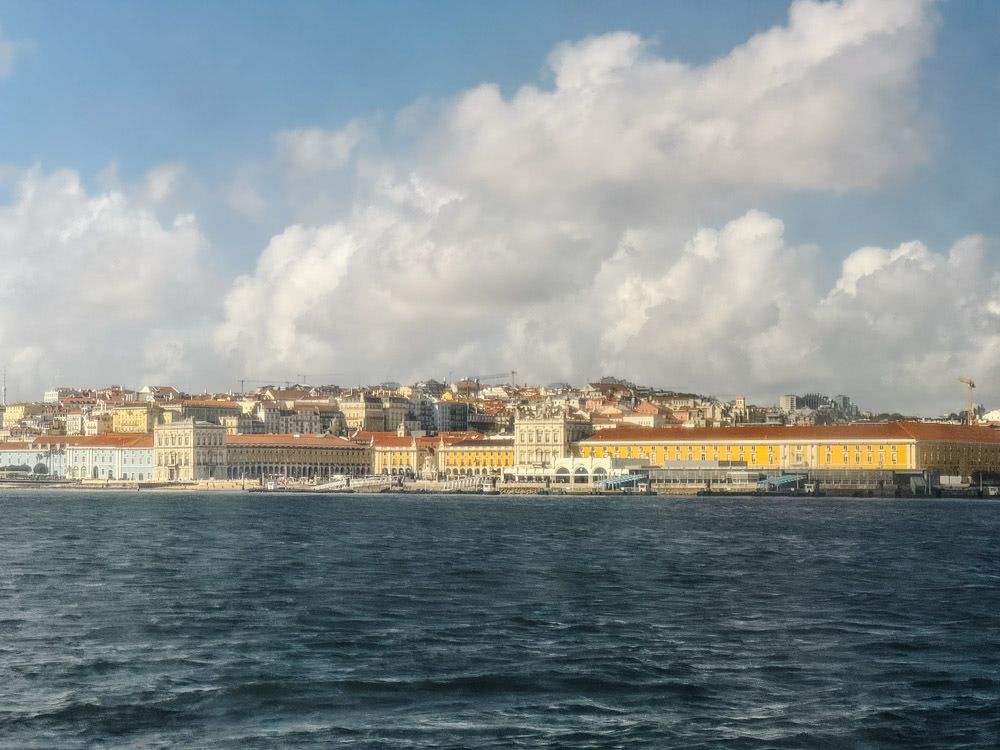
Once back, we sat down in the outdoor seating area of a café close to the terminal. We were in a mood to try something new. We spotted Mazagran under the coffee menu and ordered it. It turned out to be wonderfully refreshing. With espresso, lemon, ice and sugar as ingredients how could it not be? It was quite windy by now and the large outdoor umbrellas of the café were flapping madly.
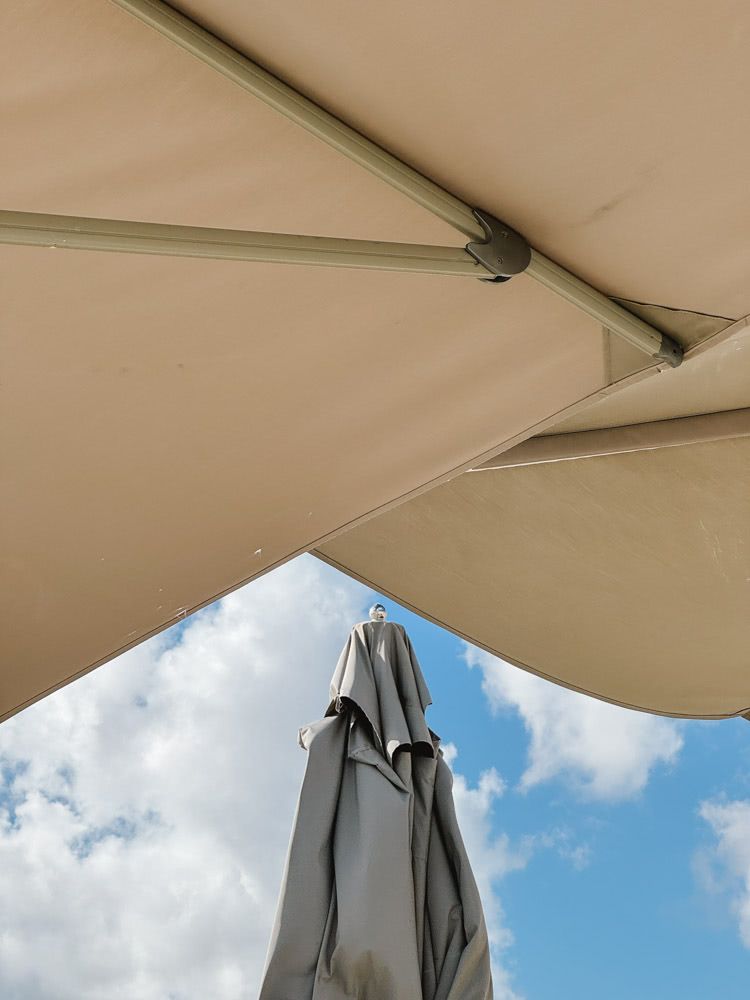
Time to do something indoors-y. We settled on visiting the Gulbenkia museum. But that’s for another post. As we walked through the terminal to the metro station, I caught a glimpse of the view outside. I had to pinch myself to make sure I wasn’t inside a dream.

The only time we felt the ride get a little bumpy was when the other ferry from Barreiro to Lisbon crossed us mid-way and our ferry caught its powerful wake. But even that moment had nothing on that gut-churning ride to Capri from Naples back in 2019.↩︎
English translation of the text on this website: In 1852, three windmills were built in Alburrica: The Giant, the West, and the East. The East and West mills, of common typology, have a cylindrical tower with two floors, a movable roof, and two millstones. They were deactivated in 1950 and acquired by the City Council in 1973. The West Mill displays a votive registration in tile dedicated to Our Lady of the Rosary. The Giant Mill, of Dutch typology, was deactivated in 1919, and inhabited by fishermen until 1998 when it became Municipal Heritage.↩︎
There was a red bike path along this footpath and it was completely empty. Cycling in Barreiro and Lisbon seemed like an exclusive domain of food delivery couriers.↩︎